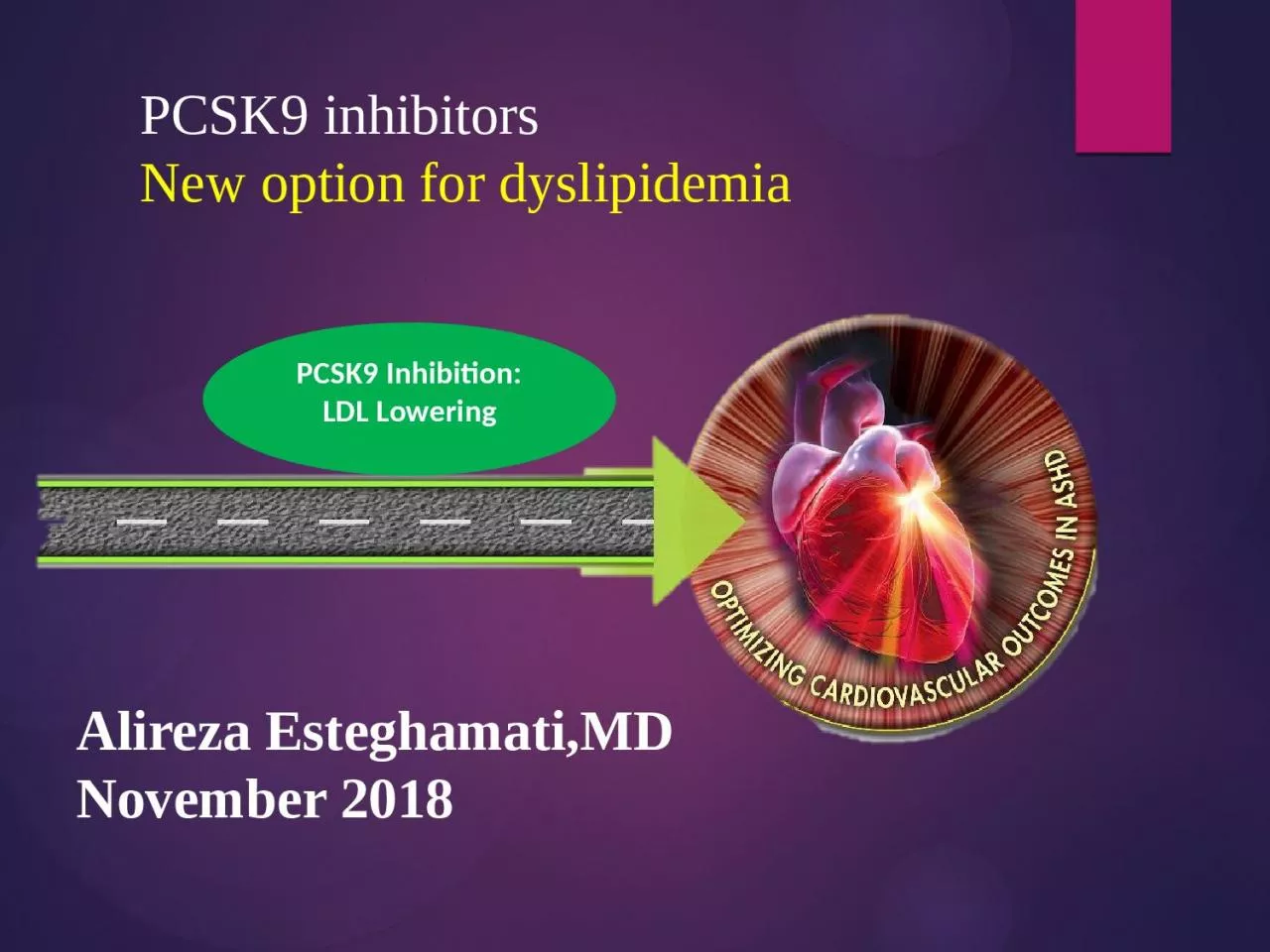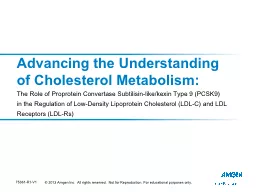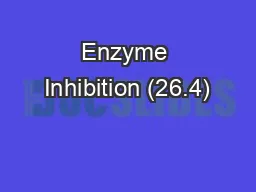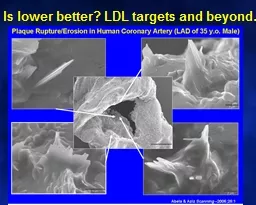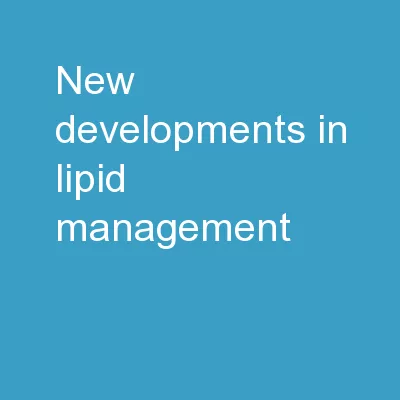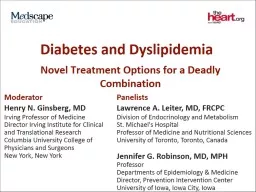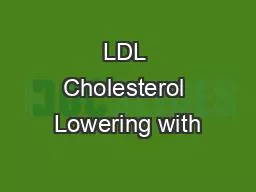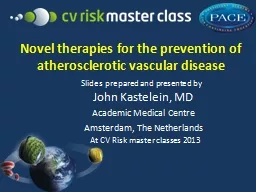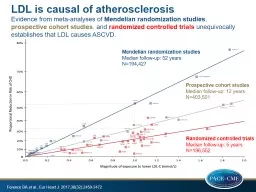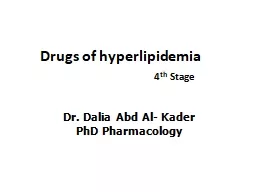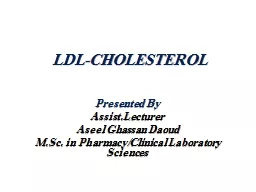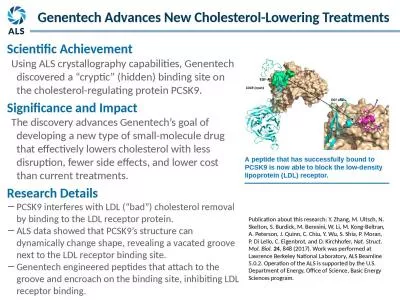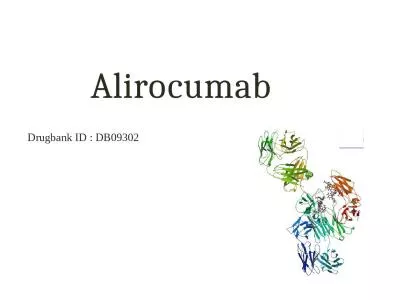PPT-PCSK9 Inhibition: LDL Lowering
Author : SweetiePie | Published Date : 2022-08-01
PCSK9 inhibitors New option for dyslipidemia Alireza EsteghamatiMD November 2018 Agenda Residual risk after Statin PCCSK9 Inhibitors physiology amp mechanism of
Presentation Embed Code
Download Presentation
Download Presentation The PPT/PDF document "PCSK9 Inhibition: LDL Lowering" is the property of its rightful owner. Permission is granted to download and print the materials on this website for personal, non-commercial use only, and to display it on your personal computer provided you do not modify the materials and that you retain all copyright notices contained in the materials. By downloading content from our website, you accept the terms of this agreement.
PCSK9 Inhibition: LDL Lowering: Transcript
Download Rules Of Document
"PCSK9 Inhibition: LDL Lowering"The content belongs to its owner. You may download and print it for personal use, without modification, and keep all copyright notices. By downloading, you agree to these terms.
Related Documents

